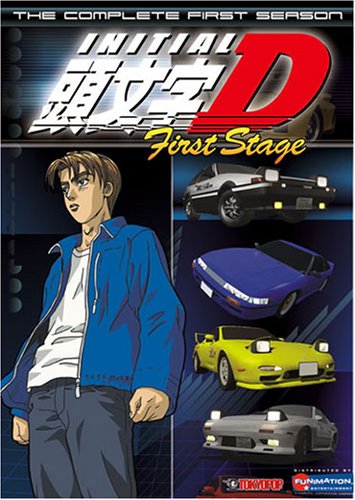
original author: Akira Kurosawa
director: Toshifumi Takizawa
review type: anime
status: completed
genre: Shonen, Chanbara, Action,
studio: Gonzo
original run: July 12, 2004- December 25, 2004
episodes: 26
similiar to: Samurai Champloo, Peacemaker Kurogane
Synopsis
It began with a small rice village, Kanna. Every year during the harvest, a group of bandits would forceful steal their produce. To add salt to their wounds, the bandits have began to rob them off their woman and children. It is a curse they deal with yearly and have finally decided to put it an end to it.
The village Elder has decided that as the safety of the village has been jeopardized, the only way they could attain that freedom is to hire samurai to fight against these marauders. Sadly, the village cannot afford to pay them, but in trade for their services they would pay them with a supply of rice. They send three people to the city. One of them is Kirara; a village priestess of Kanna. Her willingness to search for samurai was substantiated with the fact that she wanted desperately to see the outside world; that which is beyond Kanna.
As the convey reaches the city, they run into trouble. But was rescued by Okamoto Katsushiro; a young and inexperienced samurai. They then bump into Shimada Kambei; the lead protagonist and a war veteran with an awful distaste to war and anything violent. He was reluctant at first, but decides to help out after being persuaded. Together with Katsushiro and Kambei, they search diligently for others who could and would help out the dilemma Kanna is facing. They are successful and five others join Katsushiro and Kambei to form the seven samurai that would aid Kanna in their liberty from the bandits.
But what awaits the fate of the seven is just not the issue of Kanna alone. There would be a bigger and dangerous picture that the seven would need to deal with. The anime details the journey of these "band of brothers"; warriors who were wounded by the tides of war and are searching for a redemptive moment.

Rempit's Vrooming Comment
Well, this is definitely the anime version of Akira Kurosawa's 1954 hit movie Seven Samurai; the predecessor of the American 1960 Magnificent Seven. The anime however differs from the original by having a steampunk atmosphere and environment to it. Which I think is absolutely cool. Having a healthy dosage of ancient and modern concepts gave the anime the boost it needed.
Frustratingly, there is not much character development. Just that the young Katsushiro would soon discover the life of the battlefield. Which is not an easy one; though many might fancy it. I like the role played by Kambei. Here he not only acts as a mentor to Katsushiro but also we note a more matured lead even though some may argue that Katsushiro is the lead character. He is somewhere in the line of Okita Soji from Peacemaker Kurogane and also Hatake Kakashi from Naruto in terms of mentoring, leading and planning.
Now the other interesting part of this anime is that those who are part of the seven do get their fair share of airtime. Not many would focus on each specific character and their contributions much. Most secondary characters would either be doing something only when it demands them too and would basically be filling up the behind the scenes actions; the gaps and transitions from one episode to another. But here, all seven which is still a big group, are somewhat the lead cast of the show and I think that's a fairly strong concept of the anime; teamwork.
But what marks this anime from the rest is the x factor to why I liked watching it. They stuck to the original plot when some of them had to die in battle. Which of course is familiar to us, but what's the difference? The usual pattern for an anime would be that they would die one at a time, having an epic battle and then die. It is customized for them. But here the for the first time, we have three of them dying at the same time; during the final battle. It is a threshold event. First of it's kind. And I'd have to say that it is definitely a brave move to do that.
There are moments of exaggeration in it, but I guess the good part is that despite things being overdone (like a normal katana slicing through a 10 storey robot in half), it still has its sense of realism. Battle scars, battle wounds, and finally martyrdom; for some of them of course. The art is not bad, typical for any Gonzo production. So you'd have the designs somewhat familiar to some other titles; if you'd notice the similarities of anything Gonzo. I guess it's their trademark.
Well there is one con in the show I totally forgot to highlight. It's their dialogue lines. Some of them are just hilarious. So if you are a fan of the Seven Samurai or would like something modern meets ancient and fast paced, then check this out.

Rempit Rates:
Storyline: 4/5
Character Development: 3/5
Art: 4/5
Originality: 4/5






































